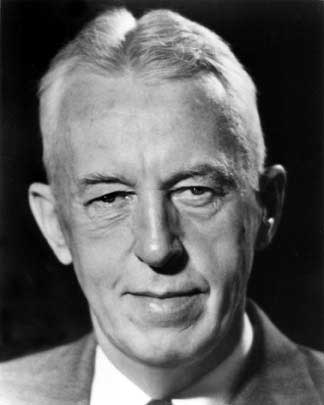
William Griffin Wilson
1895 - 1971
[back] Nutritional & Orthomolecular Doctors
Alcohol
THE ORANGE PAPERS One Man's Analysis of Alcoholics Anonymous by "Orange"
Bill Wilson -The first fan of orthomolecular treatment
[2008 vid] Dr Hoffer talks about addiction, niacin, AA, Bill W. and more Hoffer, M.D., Ph.D. , Abram Sourced B3 (Niacin)
[pdf 1971] The Vitamin B3 Therapy. A third communication To AA's Physicians from Bill W. Feb 1971. Sourced B3 (Niacin)
[pdf 1968] The Vitamin B3 Therapy. A second communication To AA's Physicians from Bill W. Feb 1968. Sourced B3 (Niacin)
[pdf 1965] A communication To AA's Physicians from Bill W. Sept 1965. Vitamin B3 Therapy: A promising therapy for Schizophrenia and it's relevance to Alcoholism. B3 (Niacin)
[pdf] Letter by Mrs Bill Wilson

Quotes
The man who would
co-found Alcoholics Anonymous was born to a hard-drinking household in rural
Vermont. When he was ten, his parents split up and Bill was raised by his
maternal grandparents. He served in the Army in WW I, and although not seeing
combat, Bill had more than ample opportunities to drink. In the 1920's, Wilson
achieved considerable success as an inside trader on Wall Street, but a
combination of drunkenness and the stock market crash drained what was left of
his fortune and his capability to enjoy life. Hard knocks, religious experience,
and a growing sense that by helping other alcoholics he could best help himself
led Bill to create one of the world's most famous introductions: "My name is
Bill W., and I'm an alcoholic." Even as Alcoholics Anonymous slowly grew, many
of Bill's financial and personal problems endured, most notably depression.
Abram Hoffer writes: "I met Bill in New York in 1960. Humphry Osmond and I
introduced him to the concept of megavitamin therapy. Bill was very curious
about it and began to take niacin, 3,000 mg daily. Within a few weeks fatigue
and depression which had plagued him for years were gone. He gave it to 30 of
his close friends in AA. Of the thirty, 10 were free of anxiety, tension and
depression in one month. Another 10 were well in two months. Bill then wrote
"The Vitamin B3 Therapy." and thousands of copies of this
extraordinary pamphlet were distributed. Bill became unpopular with the members
of the board of AA International. The medical members, who had been appointed by
Bill, "knew" vitamin B3 could not be therapeutic as Bill had found it
to be. I found it very useful in treating patients who were both alcoholic and
schizophrenic. —From Vitamin B3: Niacin and Its Amide, by A.
Hoffer,
M.D., Ph.D.; Wilson B: The vitamin B3 therapy: The first communication to
AA's physicians (1967); A second communication to AA's physicians
(1968).
"A little known obscure fact is that Bill W., The co-founder of Alcoholics Anonymous wrote three papers about the biochemical aspects of Alcoholism in the last ten years of his life. Bill, had suffered horribly from depression most of his life, both before and after sobriety. He found some substantial relief from this misery in 1960 after meeting two doctors in New York; Abram Hoffer and Humphrey Osmond. These MD's were researching alcoholism and mental health disorders in Canada. After meeting Hoffer and Osmond Bill began taking vitamin B-3 (Niacin). Bill found such a great release from his depression that he set out to advance this second vocation for the remaining years of his life. Shorty before his death, Bill was asked what one thing he would like to be most remembered for in the history books; He said that it would be for his promotion of the B-3 Therapy, not the creation of Alcoholics Anonymous.'' Sourced
''One early advocate of psychedelic therapy was William Wilson, known more familiarly as Bill W., who founded Alcoholics Anonymous in 1935. After observing alcoholics undergoing LSD treatment and taking the drug himself in 1956, Wilson became convinced that it might benefit alcoholics by triggering religious experiences like the one that had helped him stop drinking.'' [2005] Peyote on the Brain: Nature's Cure for Alcoholism